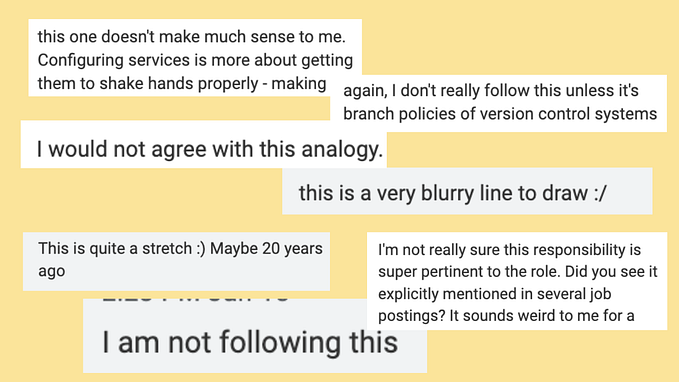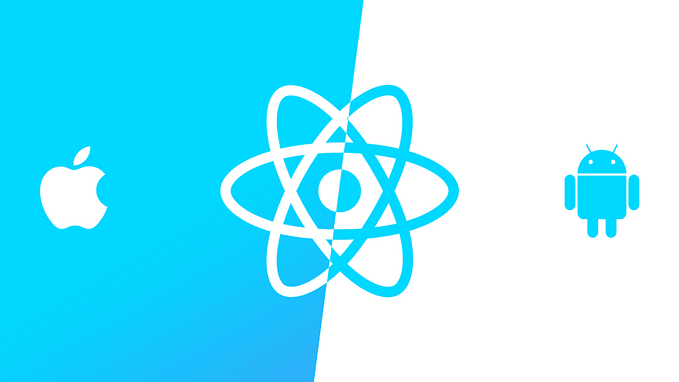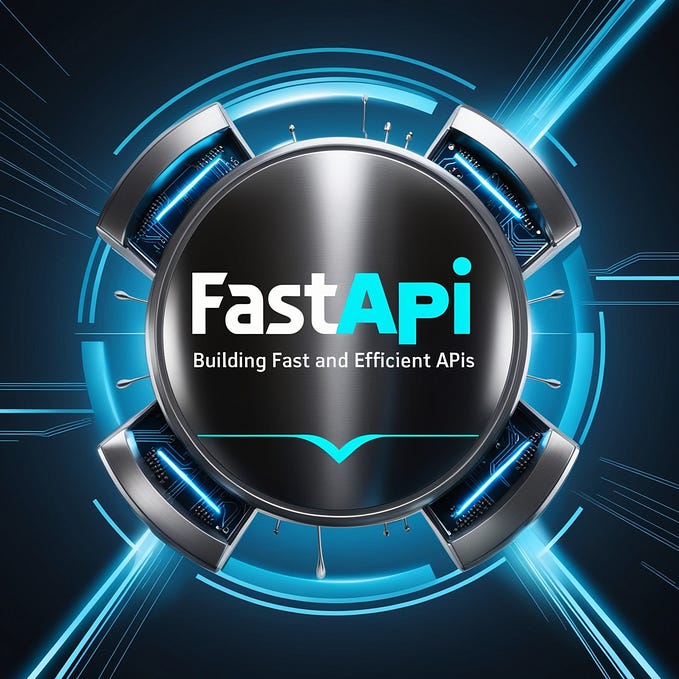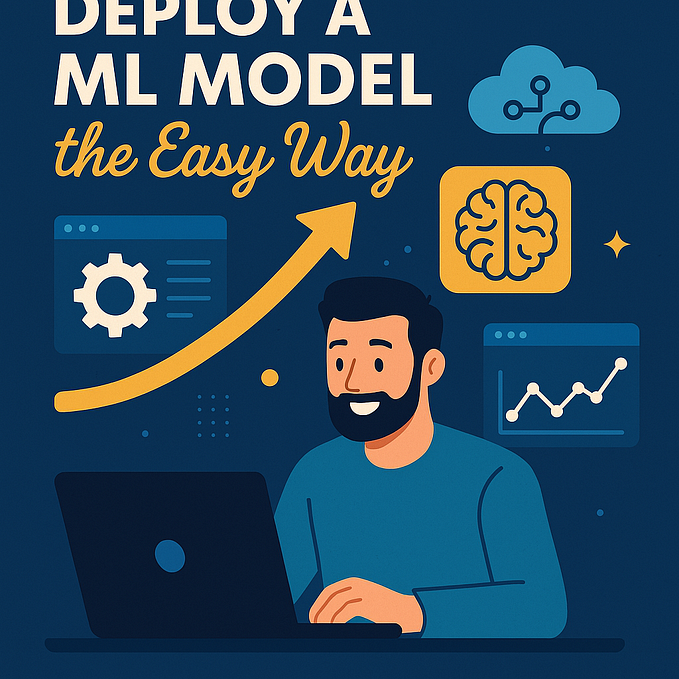The Anatomy of Design Strategy

“Strategy” can be a very nebulous and inaccessible term, meaning different things to different people in different contexts. From a design perspective, we know that strategy is an important part of how we communicate direction and intent, as a function, relative to our wider commercial goals.
In other words, how will our products, services and experiences need to change or evolve over time, to support the needs of our customers and enable our wider business goals?
Now, for any given organisation the act of planning and strategising is commonplace. In its simplest, a strategy is a plan for how we’ll succeed with a pre-defined and often longer-term goal. And any company without a plan is simply betting that success follows serendipity.
Probably not the best strategy.
Furthermore, the nature of a strategy (a plan) is such that these will often cascade; from grander, longitudinal goals that require the concerted efforts of every single employee down to those at a functional or team level. The point is, at whatever level strategy is set, it should be done with some awareness and understanding of the bigger picture.
And for completeness, we must remember that tactics are not the same as a strategy. Where strategy defines a meta-plan, tactics relate to the action, or series of actions, that would allow teams to execute on short-term goals. As such, tactics typically exist within the context of a parent strategy.
However, when we talk about product strategy, there are often nuances to how a product strategy is formulated, who is involved in the process and the relative emphasis of said strategies towards its commercial, technical and experiential components.
In my experience, a product strategy will typically lean first and foremost towards commercial considerations; inclusive of:
- Relevant industry and market trends.
- The size of the addressable market.
- Some analysis of our reach/ability to penetrate that market.
- An understanding of the competitor landscape and whitespace.
- Aspects of product positioning (offering relative to the market).
- A decision on the desired, longer-term commercial goal.
So, while the commercial component of a strategy will define in clear and certain terms the business opportunity (i.e. where we want to play) there is also a job for folks in Design and Engineering leadership to describe the implications on the product/service from an experience and technology perspective (i.e. how we plan to win).
Co-Creating Strategy
When determining the specifics of strategy (how we plan to win) there is a level of context required — often as a product of UX research — to consider the implications of this commercial direction relative to the goals (JTBD), pains, needs and desires of the customers who are pivotal to the success of that strategy.
After all, a given strategy will only ever be successful if the subject of that strategy (the target customers) are able to consume, use and get value from the activities that are proposed in that plan. We need to understand both where they are heading (the market) and how we help them get there (our offering) in order to realise our commercial goals.
And so, the job of a design strategy in the planning process is to analyse customer insight (what we know about our target customers), bring contextual awareness around the current product offering (the as-is experience) and to identify, relative to the desired direction of travel (the vision), where and how the offering needs to evolve (the to-be experience).
The takeaway here, following the model of cross-functional leadership, is that a good product strategy should comprise of contributions and perspectives from commercial (product/marketing/sales), technology (engineering) and design (UX) to ensure the resulting initiatives speak to the following considerations:
- Desirability: Is it something people want/need?
- Viability: Is it commercially attractive?
- Feasibility: Is it technically possible to implement?
- Usability: Is it easy for people to use?
Inputs from Product Management and Product Marketing will focus on the market and typically speak to the commercial opportunity, seeking to answer:
What trends are influencing our addressable market and what’s the size and shape of the resulting commercial opportunity?
Inputs from Engineering leadership will take the form of an opinion on the technical component of strategy and key architectural decisions, in an effort to answer:
How might the underlying technology evolve to support the needs of our customers and enable our commercial strategy?
And last but not least, inputs from Design leadership will express a view on the desired direction of the experience, relative to the needs of the target customer:
How might the product/product experience evolve to support the needs of our target customers and enable our commercial strategy?
Needless to say, any good product strategy must consider these three perspectives, working in concert, in order to succeed. The commercial strategy hinges on the teams’ ability to execute, where execution is dependent on both an understanding of how a future experience will influence customer behaviour and to what extent technology can enable that desired experience.
So, as above, while it’s important to call out that a product strategy is typically owned, driven and coordinated by folks in a product management capacity, the inputs associated with that plan, and the shape of any resulting initiatives, will and should be the product of cross-functional collaboration (as inclusive of Design).

What is a Design Strategy?
A design strategy describes the gap between a commercial strategy (the field of play) and how teams might iterate or evolve the customers’ experience with their products and services in order to achieve its commercial goals (their plan of attack).
Specifically, it provides a lens on a commercial strategy that allows teams to determine how they’ll align desired commercial outcomes with the needs of their target customers; illustrating the combination of technical architecture and experience design that will drive behavioural change (i.e. the leading indicators of commercial success).
“It is a way of translating the intent of a business, product, or service into the experience of that business, product or service (and back again!). It’s the middle ground that’s often missing between what the business wants and what the people need.” — Ben Crothers
Typically a design strategy will encompass:
- What success means (and for whom) and how to measure it.
- The specifics of the opportunity(s) (pain, gain or delighter) for a given audience.
- Some analysis of the current proposition and the resulting experience.
- A vision and set of principles that illustrate a desired, future state.
Furthermore, in an enterprise context, the design strategy will extend beyond the end-user to also consider other key organisational personas that form part of a more complex picture; where an understanding of their interactions, interfaces and different needs is fundamental to the solution’s adoption, success and retention.
In this scenario, the success of a given strategy may extend beyond the scope of an individual persona’s experience with a singular product to something multifaceted; catering for multiple organisational roles and considering the wider aspects of the end-to-end Customer Experience (i.e. beyond product).
“Design is about the customer, not just the user. Design has always been about selling things.” — John Maeda
As with any strategy, there are inputs that serve as the basis for the reasoning and decision-making, the artefacts (or outputs) of the analysis and synthesis of said inputs, and then the kernel of that strategy itself, which is often expressed as a written document.

Forming a Design Strategy
Broadly speaking, a design strategy should set out to answer three main questions that serve to provide the context and rationale in support of our general direction, as well as the specific customer challenges we’d need to address along the way:
1. Where are we today?
In an effort to provide the necessary situational awareness and formulate a clear diagnosis, our job is to consider the commercial agenda relative to our understanding of the customer. The emphasis here is in defining the goals and needs of the target audience (demand), the degree to which these are currently served by your offering (supply) and the efficacy of the experience customers have today (the as-is experience).
The intent is to surface the opportunities (pain, gains, delighters) that will add value to those customers, in the service of our commercial goals. In one sense, it’s about broadly leveraging insights from our research to identify valuable product opportunities (desirability) and in another, applying a lens that allows us to sift through and narrow in on the opportunities that stand the best chase of driving our commercial goals (viability).
Some of the methods/approaches used to inform the analysis and diagnosis may include:
Personas: Helps teams to narrow in on a representative understanding of the target user/customer; inclusive of their context, goals, behaviours, activities, interactions and pain points.
Jobs-to-be-Done (JTBD): Provides insight into the underlying motivations behind a customer’s purchase and what they were fundamentally trying to achieve as a result of acquiring your products/service (i.e. the core of your proposition).
Journey Maps (As-Is): Allows teams to plot the experience of a typical customer as they consume your product/service to achieve a given goal; inclusive of the steps and actions they take and the quality of their experience in the process.
Competitor Analysis: Gives teams some insight into the comparable experiences of customers as they use and engage with competitor offerings, or their use of internal systems or workarounds to achieve a similar goal.
2. Where do we want to be?
Once we have the necessary situational awareness, we should do what designers do best and project beyond the here and now to imagine a possible future state. Armed with the context of who we’re trying to serve, what they are hoping to achieve and how their needs are being met today, we can start to use our design superpower — creative problem-solving — to articulate a desired (To-Be) experience.
The job here is not just to speculate on the future, but leverage the insights we have to hand and conceive of an experience that is not only desirable but one that is rooted in our understanding of the problems we need to solve, and behaviours we need to change/influence, for a specific cohort of customers (or prospects).
Furthermore, the outputs from this creative process are used to facilitate collaboration and arrive at a more visceral (as opposed to copy-based) expression of where we want to be. While outputs like storyboards are considered artefacts of the design process the emphasis should be on using these as tools through which to engage with teams and stakeholders; driving alignment, motivating progress and maintaining trajectory.
Some of the methods/approaches used to provide vision and direction may include:
Target Opportunities: These may take the form of need or problem statements that we believe we must address as part of our design strategy; where each statement attempts to frame the opportunity from the perspective of a given persona, in a given context, as they seek to address one or more JTBD.
Vision & Principles: A vision can take many forms, but high-level visual concepts, along with a set of guiding design principles, can be a really powerful way to portray how the experience might evolve, as well as providing the set of attributes that are core to that experience and will likely guide any subsequent design decisions.
To-Be Journeys: The opposite of an As-Is journey, To-Be journeys illustrate the desired experience of a typical customer as they consume a future iteration of your product/service; expressing an ideal experience from the customers’ perspective and a desired emotive response.
Storyboards: Storyboards are a powerful visual tool for communicating key aspects of the wider experience from the customer’s point of view; often providing a level of detail around some key aspect of the wider journey, with a focus on the conceptual experience as opposed to the specifics of a UI.
3. How will we get there?
Finally, with a future direction in mind, there is a need to wrap this all up in the form of a strategic document that can articulate, with a degree of confidence, a high-level plan. Specifically, how do we, as designers, believe we should close the gap between where we are today and where we want to be? And, what are the strategically significant steps that pave the way towards that experience?
Furthermore, this is once again an opportunity to demonstrate Product Thinking in design leadership, by clearly articulating how the product opportunities we’ve identified and the behaviours we need to enable (or leverage), ladder up to explicitly support our wider commercial goals.
This is about how we use insight and reasoning to make a compelling case for change, based on a solid comprehension of the commercial intent, our analysis of problem space (as it meets our offering) and a deep understanding of the goals and needs of the target audience.
Whilst the exact structure and format of this strategic artefact is likely to differ, the general taxonomy from Richard Rumelt’s Good Strategy Bad Strategy is a good one to follow, with the inclusion of something akin to a time-based plan or roadmap of sorts.
Diagnosis: Based on prior insight and analysis, a diagnosis summarises the current situation from a design perspective, in terms of the gap between the current experience (what we offer today) and the desired experience (what we need to offer); inclusive of the degree to which we’re positioned, as a function, to close that gap.
Guiding Policies: Your guiding policies outline some general design directives, formulated to specifically address the challenges outlined in your diagnosis. Ideally, these will also reference the key customer behaviours you’re looking to influence and may be reflective of the principles established alongside your vision (see step 2).
Coherent Actions: These represent the key design initiatives that outline (to a level of detail) how you’ll execute each guiding policy. For each action, also think about proximate measures of success, which should ladder up to the customer behaviours (outcomes) identified during your analysis (see step 1).
The Design Plan: Finally, in an agile software setting, there is the recognition that while the vision serves a North Star — guiding longer-term design and development activities — it is absent of the concept of iteration. As such, the final part of the strategy should allude to the series of steps or significant milestones that will pave the way towards the desired experience.

Paving the way to impact
In conclusion, strategy, as a concept, applies just as much to Design as it does to other product roles. A good strategy is a product of collaboration and holistic thinking, ensuring the teams’ broader decisions and resulting efforts are informed by those who bring commercial, technical and design-centric perspectives.
As Designers, we’re well equipped to be creative and explore possible futures, but it’s how we interface with and align ourselves to the commercial components of a cross-functional strategy that increases the odds of our vision coming to fruition, and by virtue enabling Design to have greater strategic impact.
It’s also about knowing the market, knowing the people we’re trying to reach, what they need and how they behave and mapping that back to the current offering and resulting experience. This analysis provides the backbone of our strategy and is used to rationalise and drive a series of longitudinal design decisions; each paving the way towards a better, commercially aligned future.
We’re all strategists in some shape or form and while strategic thinking may not come naturally, having a process we can defer to and knowing when and how to leverage certain methods and artefacts (part of a strategic toolkit) allows us to form a compelling, evidence-based rational, along with a visceral and engaging picture of the future, which serve as a driving force for change.
Cover image courtesy of vectorjuice via www.freepik.com.








